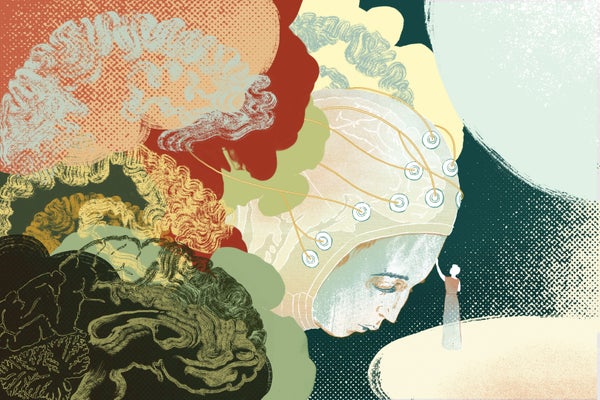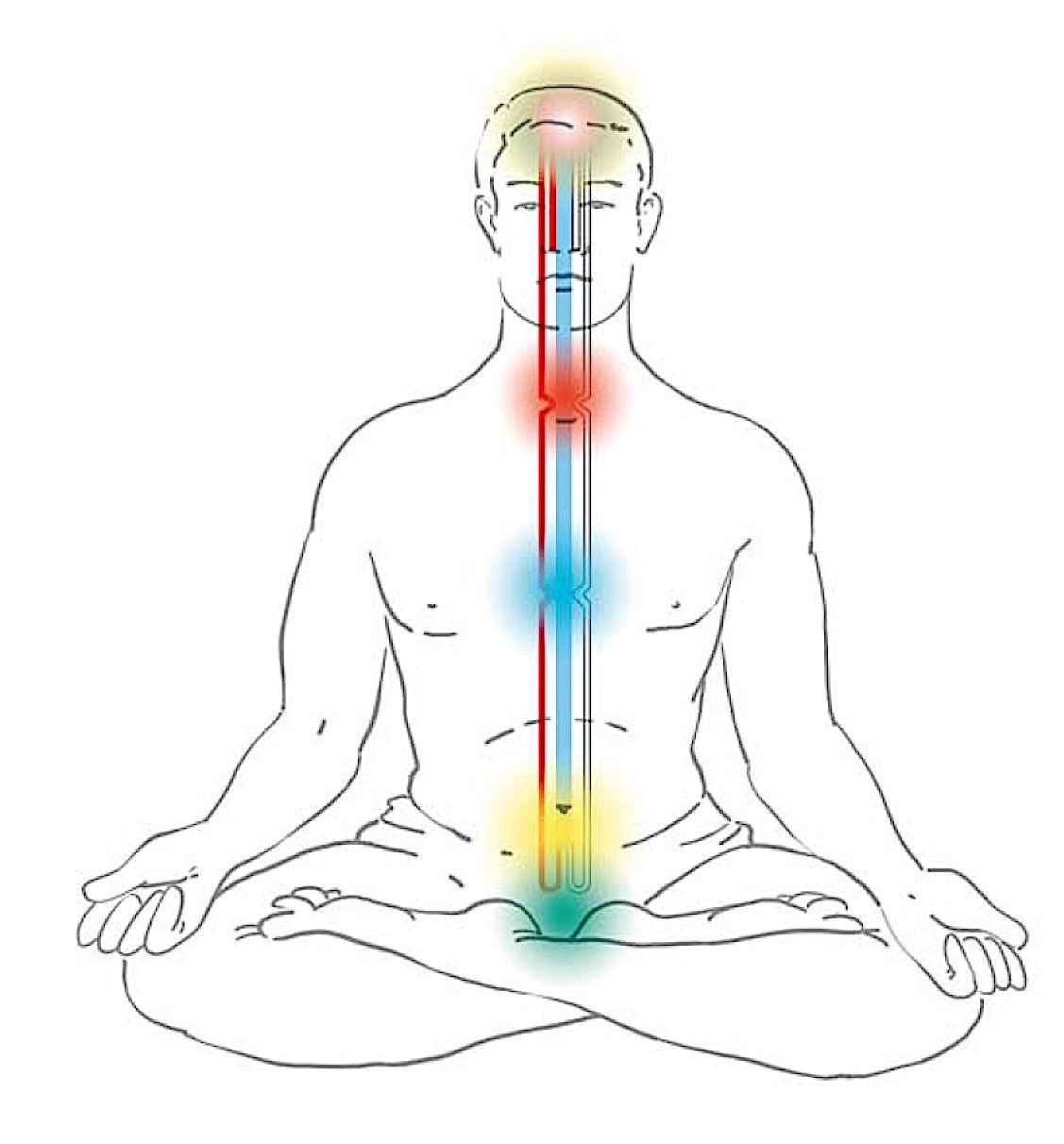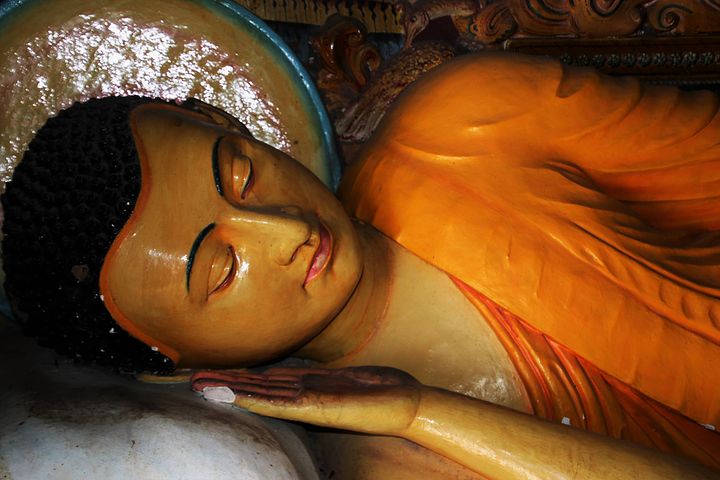
Have you ever wondered what it would be like if you could control your dreams? Those ever-changing scenes that dash from one scenario to the next, seemingly without rhyme or reason?
Lucid dreaming is the art of waking up, or becoming conscious, in your dreams. Through this, you can learn how to control your dreams: tame the rising tides that have washed you up on the highest mountain or decide which door of the multitude in front of you to travel through at your awakened mind's discretion.
There are many techniques for how to lucid dream, and what might work for some may not work for others. Having a variety of methods to choose from and experiment with is the most effective, as we are not all wired the same.
The Western tactics tend to be less intensive, and I find those techniques to be the easiest for me. This is likely to be the case for many beginners. However, having knowledge of the Eastern techniques is invaluable. They offer further paths to travel upon, new ways to open the mind, and being aware and respecting the roots of any practice before pursuing it is highly recommended.
Jump To

When Do We Dream?
While sleeping, we cycle through five stages, where the first full cycle takes 70-100 minutes and the following cycles lengthen to 90-120 minutes.[1] These cycles are important to know for future oneironauts,[2] because in only one stage of the sleep cycle do we dream.
Most scientific publications refer to four stages of sleep rather than five. Here, we consider dreaming to be its own stage, as we cognitively experience it separately from the first four stages.
Stages of Sleep
- Stage 1 - As you first lie your head on the pillow, your mind is quite active. After five or ten minutes of stillness and quiet, you find that your mind begins to drift. You enter a hypnagogic state,[3] where nonsensical thoughts and scenarios propagate, seemingly with a purpose of their own. Your brain waves begin the transition from alpha to theta. This is the first stage of sleep, and the easiest stage to be awoken from.
- Stage 2 - By this point, you've crossed the threshold between awake and sleeping. Your body relaxes, breathing slows, body temperature decreases, and brain waves are mostly in theta. As you reach deeper sleep, your brain waves get longer, which helps our neural center rest.[4] We spend about 45-55% of our sleep cycles in stage 2.
- Stage 3 - Deep sleep begins as brain waves transition from theta to delta. This stage is less defined to us than the others, as it is more of an intermediary between light and deep sleep. Essentially, in this stage, less than 50% of our brain waves are delta.
- Stage 4 - At this point, over 50% of our brain waves are the slow, delta frequency, and restorative sleep commences. This stage is necessary for the mind to take a break while the body undergoes cellular and biological repair. Without deep sleep, it would take about three days to begin hallucinating, with a multitude of physical ailments to contend with as well.[5] To avoid such a fate, ensure you are receiving ample rest.
- Stage 5 - Finally, we reach the dreaming stage, also called REM (Rapid Eye Movement) sleep. We cycle back up through the stages to get here, and it replaces stage 1 throughout the rest of the night. What's interesting about REM sleep is that your brain waves act as though you are awake: they've returned to alpha from delta, your heart rate and oxygenation increase; the only difference is that you are paralyzed in sleep.

The Dreaming State
Within stage 5, we find ourselves in impossible scenarios, being flung every which way without control or care. When awoken from REM sleep, one is keen to remember the details of their dreams, and can also carry the intense emotions felt into the outside world.
Dreaming is a mystical state of being that we have the pleasure of experiencing every night. They can inspire us with unique ideas we wouldn't have thought of otherwise, help our brain process subconscious data, and consolidate memories. However, they can also disorient us, descend into nightmares, and become a mirror for our deepest fears.
“A single dream is more powerful than a thousand realities.”
A Scientific Dilemma
Scientists love their cold, hard facts, and dreams elude them like water slipping between the fingers. They know that the purpose of non-REM sleep is restorative, but the purpose of REM sleep is "a matter of considerable controversy."
Indeed, science cannot agree on if the sole purpose of REM sleep is to dream, because something impossible to measure couldn't possibly be the reason! Many hypotheses have been put forward, typically regarding dreams as a "parasitic" symptom. None have been proven.[6]

This negative outlook causes many people to disregard their dreams as fantasies of a weary mind, neglecting the power they could unlock if they simply tried. But not you. You are here for a reason, so let's get into it.
Benefits of Lucid Dreaming
Clarity of consciousness comes with many advantages; think of it as your mind rewarding you for paying attention to realms less clutched by ego's gripping claws.
- Choose Your Destiny - The most widely known benefit of lucid dreaming is that you are no longer subject to the whim of your subconscious. Once you wake up in your dreams, you are in control to chase your desires. Fly, fuck, perform, solve puzzles...your imagination is the only limit.
- Increase Cognition - According to the Journal of Neuroscience, Metacognition is "the ability to reflect on and report one's own mental states." When lucid, you are highly mindful of your current state of consciousness with heightened "self-reflection and volitional control," much like in waking life. Such a state elevates your overall metacognition.[7]
- Practice Real Life Scenarios - Many lucid dreamers use their extra wakefulness to rehearse upcoming life events, be it giving a presentation at work, practicing a monologue for a play, or emotionally preparing for a foreseen tragedy, such as a long-sick parent on death's door. Lucid dreaming provides additional time to problem-solve, course correct, and steady yourself, putting you ahead of your non-lucid peers.
- Get better sleep - Seemingly counterintuitive, lucid dreaming enhances your quality of restful sleep. Many believe that additional wakefulness must come at a price, but the benefits continue. While in control of your dreams, you can overcome recurring nightmares and deep-seated fears.[8] Banishing these pesky nightmares can ease anxiety around sleep, allowing you to wake up happier and more refreshed.[9]
- Enhanced Creativity - When faced with the ability to do anything at all, without the limitations of the dimension in which we reside, a common state of being is decision paralysis. You might have never pondered such a query before, and yet, here it is! By working through this initial mental block and traversing your inner worlds, you'll discover a personal symbolic representation of your life's perception. Naturally, your creativity will increase, consequently producing highly inspired works of art, unique solutions in business, or benefiting any other path you pursue.

A Warning Before Practicing
If you struggle with derealization, psychosis, or other mental health conditions that bend the walls of your reality, lucid dreaming may not be the best practice for you. I recommend a consultation with your psychologist or psychiatrist before proceeding.
Western Techniques
Recommended methods for how to lucid dream for beginners. Daily practice produces nightly success.

Motivation
As a beginner, the first step is to gather your motivation to embark on this nocturnal journey. Like any skill, harnessing the ability to trigger a lucid dream takes dedication, practice, and persistence. It could take weeks or even months before becoming lucid. Do not become discouraged if the process takes a while; this is normal.
“All that we see or seem is but a dream within a dream.”
You've spent your whole life unable to control your dreams—expecting that to change rapidly is unrealistic. Strong motivation is key, so hold fast to your lucid dream desires.
Dream Recall
The more we remember our dreams, the more we can ponder them in waking life. Being mindful of dream patterns can nudge our consciousness into a greater awareness of when we are dreaming.
The easiest way to increase recall is to keep a dream journal on your nightstand that you write in upon first waking, before you even get out of bed. Timing is everything, as we forget 50% of our dreams within five minutes and 90% within ten minutes of leaving sleep.[10]
Become familiar with your inner world. I've written on learning how to interpret your dreams using universal symbolism—such techniques can increase your self-knowledge and aid your future lucid travels as you'll have greater navigation capacity of your mind.
Question Your Reality
“None are more hopelessly enslaved than those who falsely believe they are free.”
In order to bring awareness to dreams, you need to recognize and question the dream-like characteristics of waking life. If something strange or out-of-the-ordinary occurs, like a book falling off a shelf or an alarm going off accidentally, ask yourself, "Am I dreaming?"
Continually questioning your reality while awake builds its habitual nature, increasing the probability that you will question your reality while dreaming, therefore triggering a lucid dream. Ask yourself if you are dreaming throughout the day, whether or not an odd event prompts it.
Quick Tip: Look at a clock, note the time, and then look back. If the time has changed significantly or the clock looks quite different, you are in a dream. Make this state check a habit.

Andrew Holecek in Dream Yoga writes about different levels of these moments, or "dreamsigns," as he calls them. The previously mentioned oddities would be considered weak, as they are improbable, but not impossible.
Strong dreamsigns are elements that are impossible, like viewing the Earth from space without a suit. The most effective dreamsigns are the personal ones. Dream interpretation and journaling are a great aid to recognizing these signs, which usually appear in recurrent dreams.[3]
Bedtime Lucid Dream Manifestation
A powerful tool in a lucid dreamer's arsenal is manifestation: strongly setting intentions to create a desired outcome.
“You get what you intend to create by being in harmony with the power of intention, which is responsible for all of creation.”
When lying down to sleep, with eyes closed, confidently state the following, "Tonight, I will have good dreams. I will remember my dreams. I will wake up in my dreams." Repeat this mantra as many times as you'd like. What matters is that you truly believe the words you speak. And don't give up.
Eastern Techniques
A brief introduction to the inner yogas and dream yoga. These methods are more advanced.
The Innate Body
The Innate Body, or "Subtle" Body, can be defined as "the ego, the mind, memories, the unconscious, the subconscious, and the supra-conscious aspects of the human being." Buddha's teachings and Samkhya philosophy explore the concept, with the outlook that the inner body (mental) is just as important as the outer body (physical).[11]
It is necessary to note that not everything that is physical is material. Energy is a perfect example of this. Despite its lack of materiality, energy is easily changed and manipulated. The Innate Body follows suit.

Let's dissect the Innate Body. First, the Channels. We'll focus on the central, left, and right channels, where the central channel runs from the top of the head down to the base of the spine, and the right and left channels begin at the nostrils, meet the central channel at the top of the head, and then travel down parallel, ending at the navel.
What flows throughout the channels is the Winds, or pranas. This may be more familiar as "life force energy," where the flow of oxygen in the right channel is masculine and extroverted, while the left channel's winds are feminine and introverted. These winds are unbalanced, and winds through the central channel only flow when the left and right channels stop breathing, which occurs in deep meditation or death.
Drops, or bindus, are my personal favorite of the Innate Body's aspects. Think of them as seeds of consciousness, little "mind pearls," that are typically visualized as small beads of light.

Chakras, known as wheels within the Innate Body, are the most widely recognized aspect. Depending on the practice, there are 5-7 chakras that reside along the central channel at the "base of the spine, genitals, solar plexus, heart, throat, forehead, and top of the head."[3]
Tying the Innate Body into lucid dreaming, when awake, the bindus gather at the head chakra and lower into the heart via the central channel during deep, dreamless sleep. When we're dreaming, bindus rise into the throat chakra. In visualization, the pranas go where the mind goes, where the pranas go, the bindus go, and where the bindus go, consciousness follows.
“Do not dwell in the past, do not dream of the future, concentrate the mind on the present moment.”
Chakra Activation
Now that we are aware of the importance of the throat chakra, it can be used to induce lucid dreaming. When beginning to sleep, bring your mind to your throat chakra. This pre-positions your bindus there, but in a more conscious state. Beyond the mind drops, the color of the throat chakra is red, and the sound is AH.
When the mind begins to sleep, thoughts wander. The different visualizations are a strategy to keep those pesky thoughts away. I will say, it is much more difficult in practice, at least at first. The wild mind wants to take over, and it takes considerable effort to continually bring your focus back to the throat chakra. Hold your bindus at the throat chakra, and if you do so while dropping into the stages of sleep, you are successful.

The goal of this visualization is the ability to take a waking thought and turn it into a full lucid dream without losing your wakeful control. Practicing mindfulness throughout your day-to-day life will enhance your skills in this area. With consistent practice, you may find yourself able to drop from awake to lucid dreams within seconds.
The All-Powerful Nap
A method that blends Eastern and Western lucid dream techniques is something we've all done—take a nap! This technique plays with the hypnagogic state mentioned earlier, as naps encompass lighter sleep, so one can quickly bounce between dream states to practice lucid dreaming.
The perfect napping length to practice bringing consciousness into the hypnagogic state is 30 minutes, keeping the mind away from stages 3 and 4 of sleep and within the creative period.
Longer naps of 90 minutes can be used to practice lucid dreaming, as the time is enough to induce REM sleep but not enough to cycle back to deep sleep. At 90 minutes, you'll awaken from REM sleep, which is the best time to remember your dreams.
In Conclusion
Lucid dreaming is truly a gift given to humans. By whom? I do not know. It is a test of discipline, mindfulness, and creative desire to endure the effort required to lucid dream. Passing this test is filled with rewards, and in blending Eastern and Western techniques, a personalized dream plan with multiple angles of entry can be created.
I'm going through my personal journey of lucid dreaming and dream yoga. I look forward to writing about my findings in the future, as well as bardo (death) yoga, which I have taken a special interest in.
Safe travels, fellow dreamers.
~ With love, Beatrix Devine
Last Updated on October 15th, 2025
Additional Reading
- Meditation in the iGeneration by Andrew Holecek
- The Secret Language of Dreams by David Fontana
- Creative Dreaming by Patricia Garfield
Sources
[1] - Stages of Sleep: What Happens in a Normal Sleep Cycle? - Sleep Foundation
[2] - Oneironautics - Wikipedia
[3] - Dream Yoga by Andrew Holecek
[4] - Technical Aspects of Brain Rhythms and Speech Parameters - Science Direct
[5] - The 5 Stages of Acute Sleep Deprivation - Healthline
[6] - The Possible Functions of REM Sleep and Dreaming - Neuroscience, 2nd Edition
[7] - Metacognitive Mechanisms Underlying Lucid Dreaming - Journal of Neuroscience
[8] - The Benefits of Lucid Dreaming - Sleep Cycle
[9] - Lucid Dreaming and the Feeling of Being Refreshed in the Morning - Clocks Sleep
[10] - How Dreams Work; Dream Recall - How Stuff Works
[11] - What Is the Subtle Body? - Pilgrimage of the Heart Yoga
[1] - Depiction of Lucid Dreaming, Featured Image
[2] - Lucid Dream by aronvisuals - Deviant Art
[3] - Room for Rapid Eye Movement - Duh Huynh
[4] - Dream Testing - Cat O'Neil
[5] - The Hand, 1930 - Salvadore Dalí
[6] - The Eye of Lucid Dreaming - Pinterest
[7] - “Les Voyageurs” (The Travelers) - Bruno Catalano
[8] - Throat Chakra Goddess - Primal Painter
[9] - The Five Chakras and Three Channels - Buddha Weekly
[10] - Eastern Dream Yoga - Cyber Sangha
[11] - Small Portrait - Kay Sage











